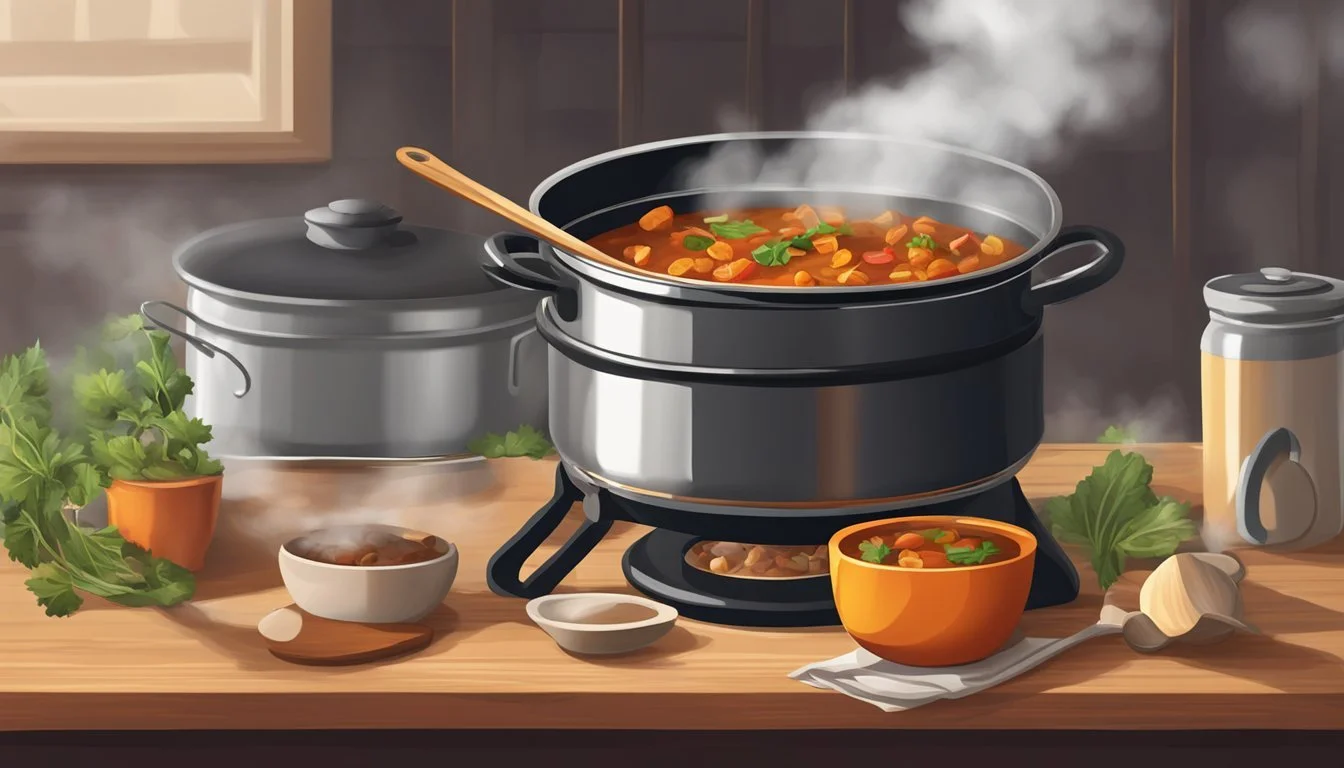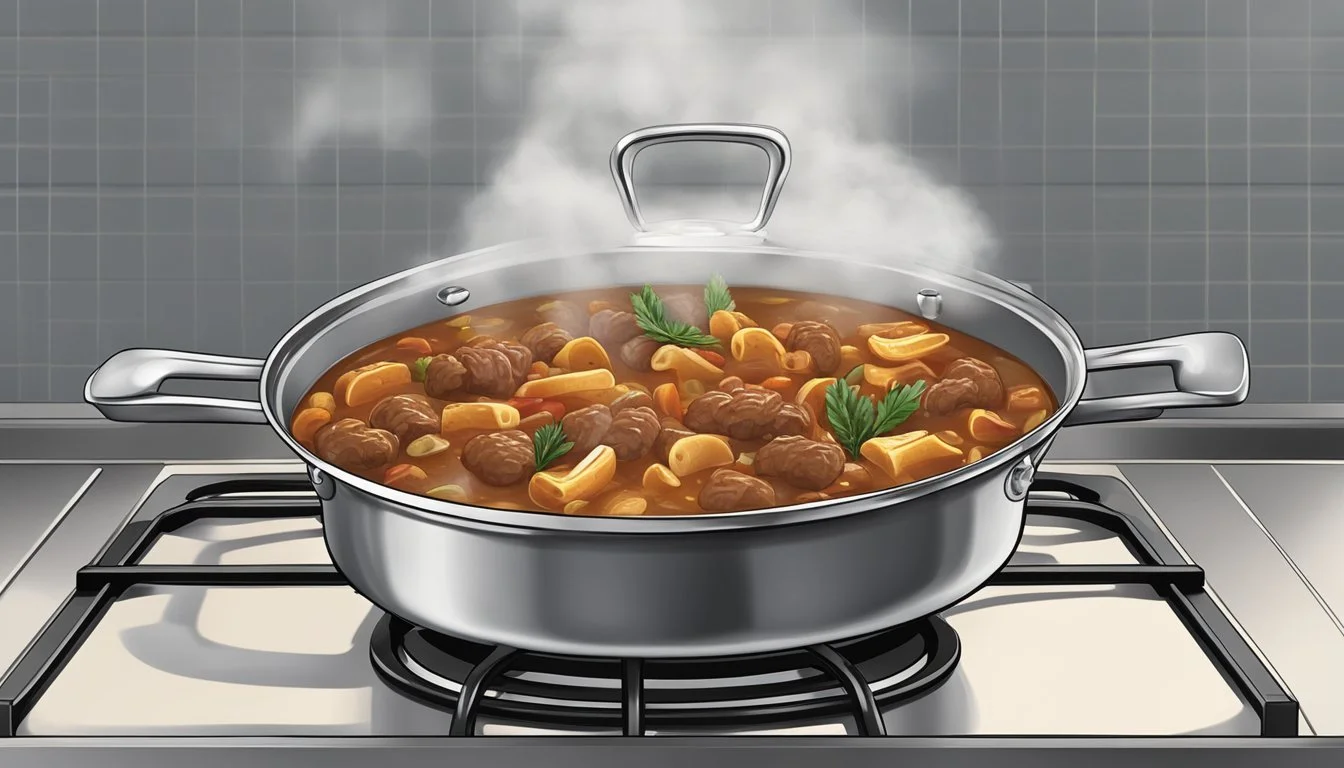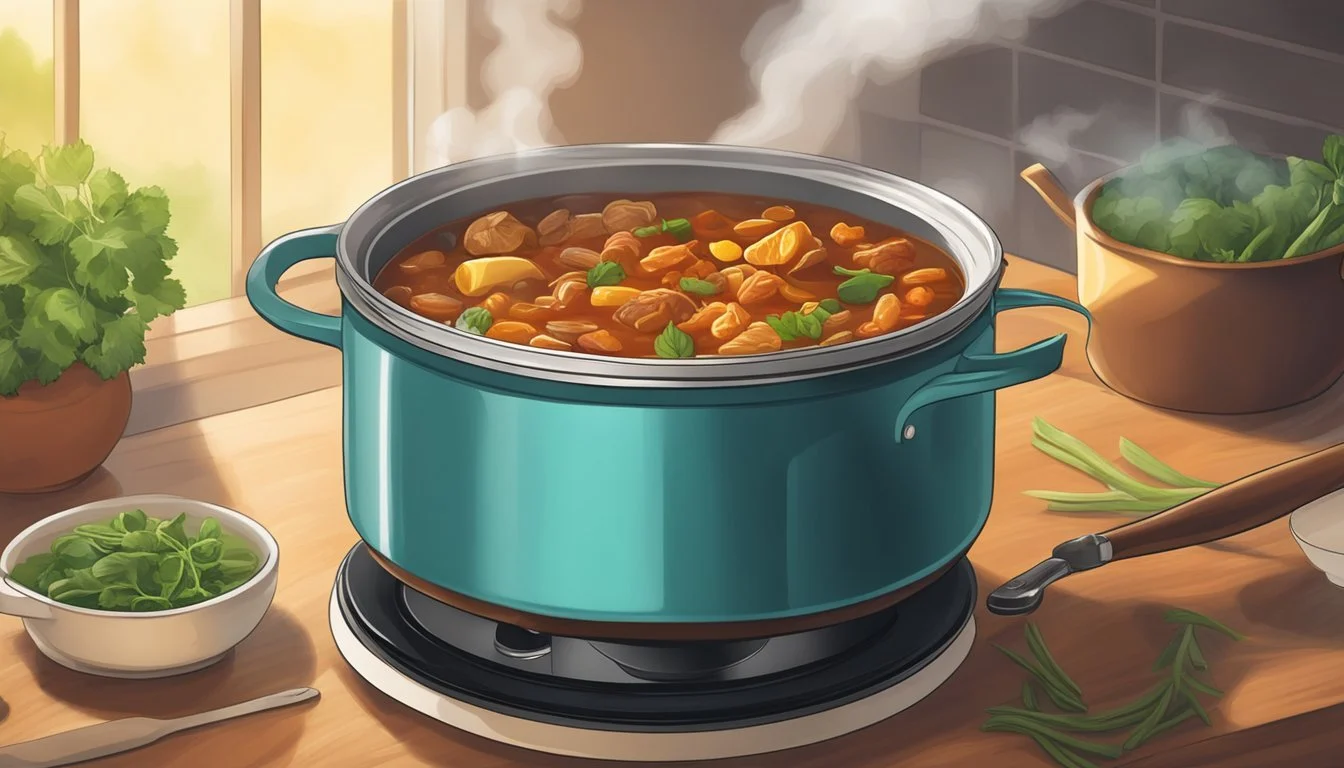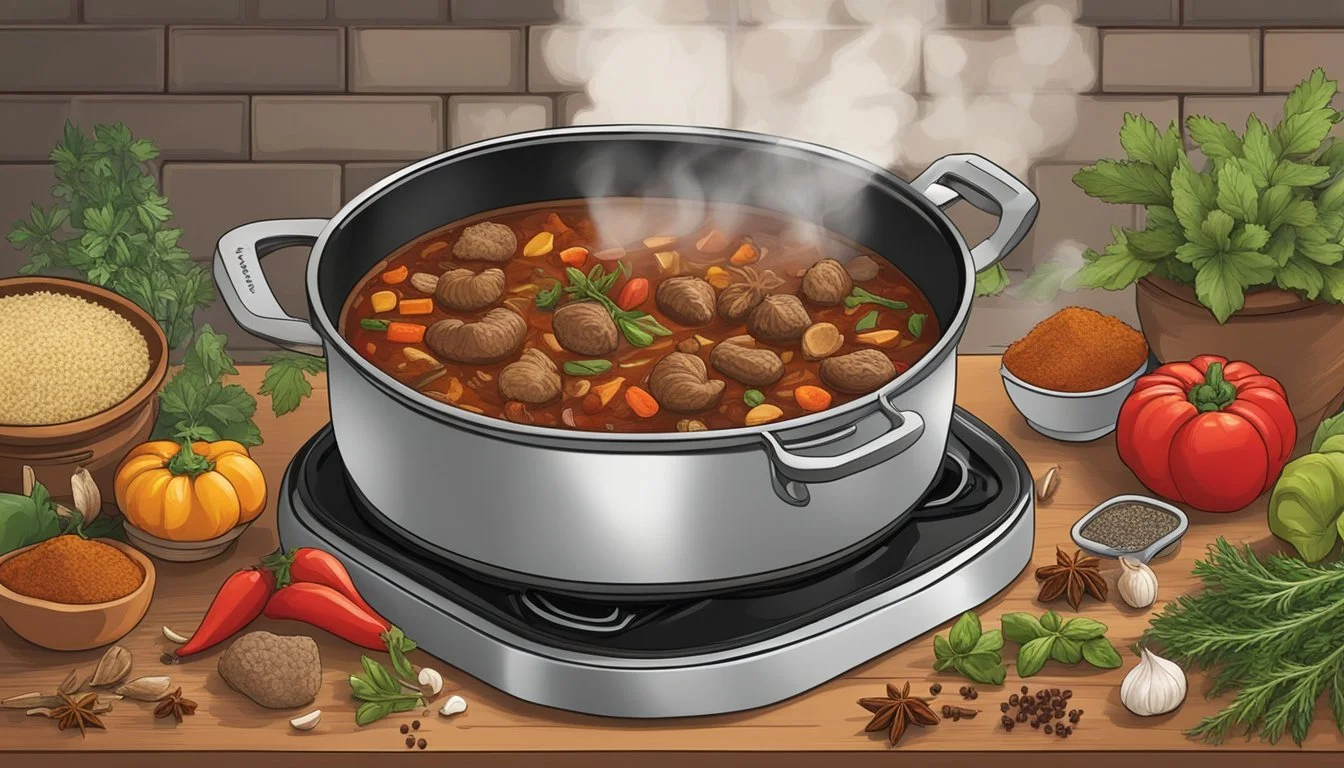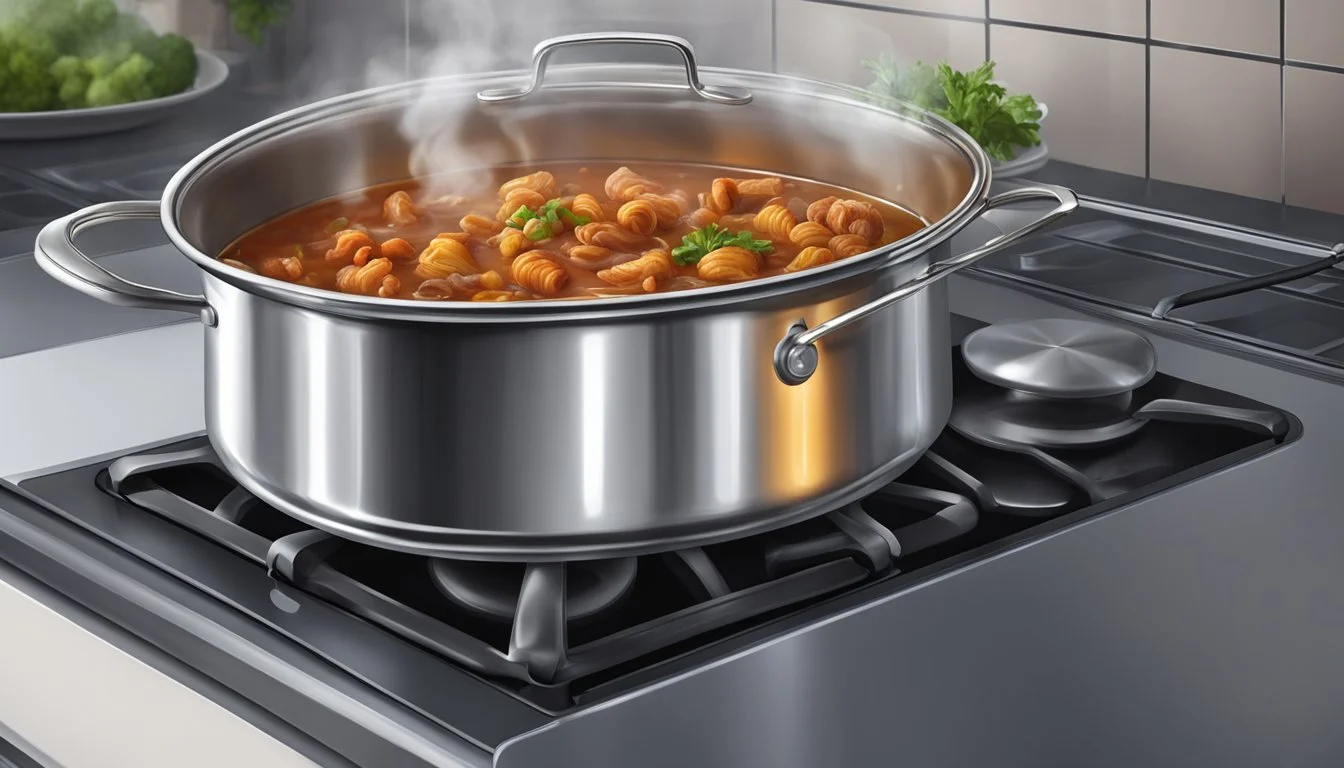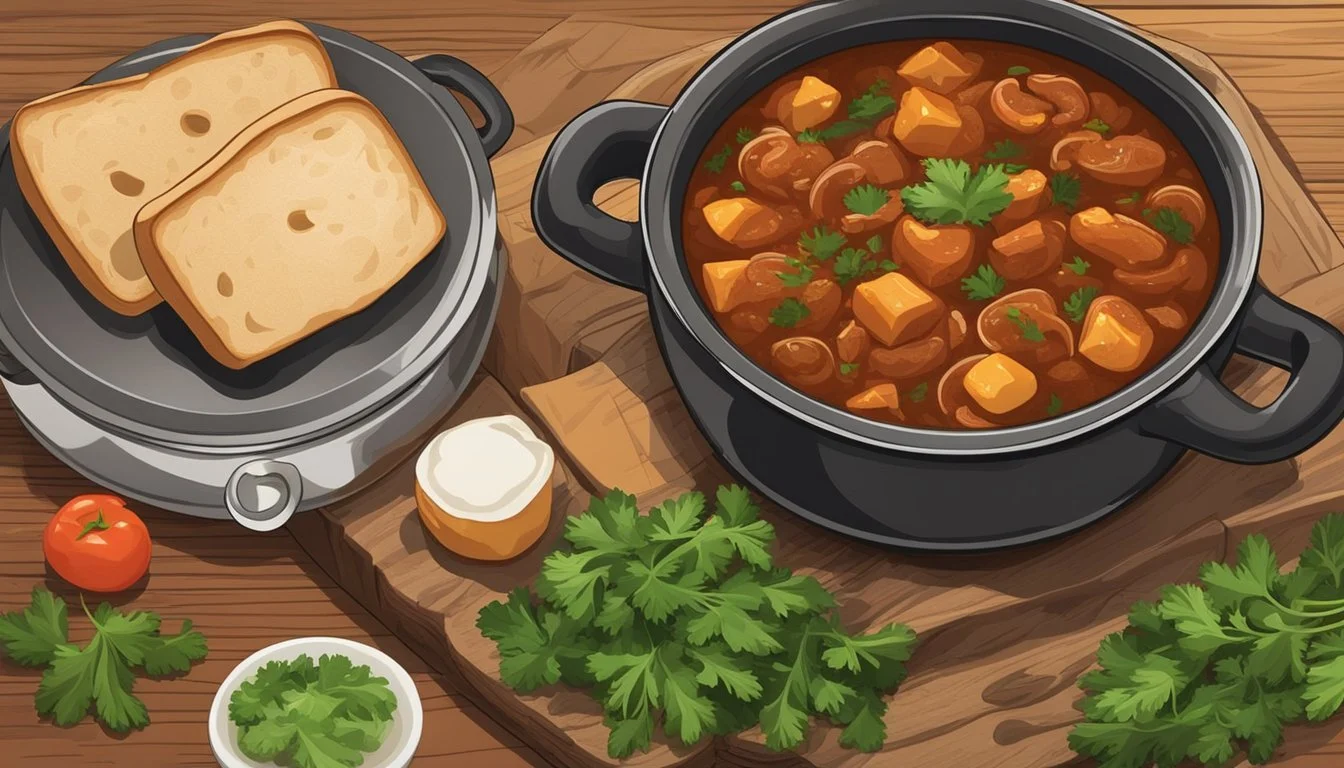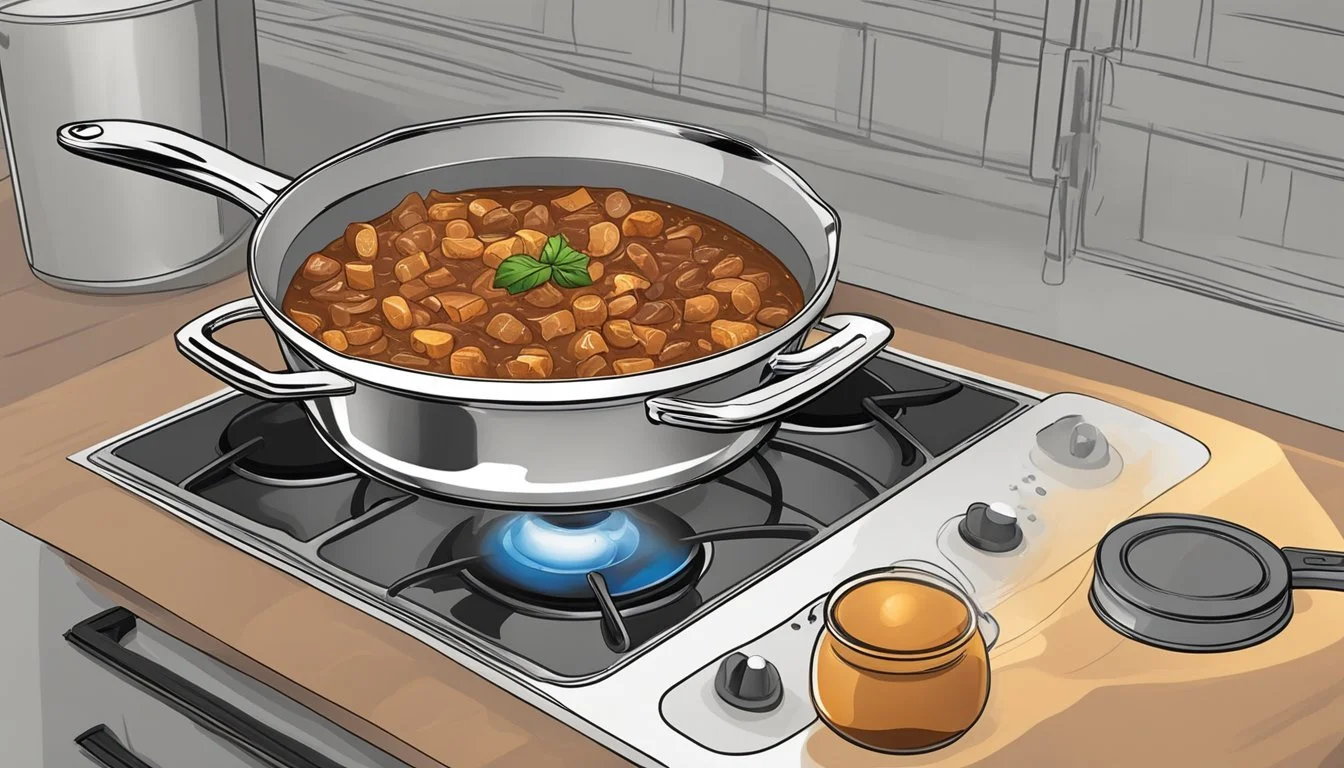Best Way to Reheat Goulash
Tips for Maintaining Flavorful Perfection
Goulash, a hearty dish brimming with flavors from robust meats, vegetables, and spices, is a meal deeply rooted in Central European cuisine. Originating from Hungary, it has become a comfort food beloved around the world, praised for its rich paprika-infused sauce and tender chunks of beef. Preparing goulash is a labor of love, often simmered for hours to achieve its characteristic depth of flavor. However, savoring this culinary delight does not end with the initial preparation; the method of reheating goulash is crucial to maintaining its savory taste and preventing texture degradation.
As with many stewed dishes (What wine goes well with stewed dishes?), goulash can taste even better the next day, with flavors melding and intensifying overnight. The key to a delicious reheated goulash lies in replicating the gentle cooking process that originally allowed its flavors to develop. Whether opting for the uniform heat of an oven or the convenience of a microwave, there are techniques to ensure that the goulash retains its moisture and spice profile upon reheating. Adding a touch of water can prevent dryness, while reheating over low heat can preserve its rich consistency. Considering the various reheating methods ensures goulash enthusiasts can enjoy their meal as if it were freshly made.
Understanding Goulash
Goulash is a beloved dish with deep roots in European culinary traditions, known for its rich flavors and hearty ingredients. This section digests the essence of goulash, examining its definition, history, and the diverse ingredients that contribute to its various adaptations.
Definition and Origins
Goulash (pronounced "goo-lahsh") is a traditional Hungarian stew, recognized for its robust use of paprika—a cornerstone spice that imparts a distinct red hue and a smoky flavor. Originating from medieval Hungary, goulash was first made by herdsmen, who prepared the stew with available meats and spices in a kettle over an open fire. As it evolved, it became a national symbol of the Hungarian kitchen.
The dish's name derives from the Hungarian "gulyás," meaning "herdsman," but over time, the culinary definition of goulash has expanded to include a variety of similar stews and soups found across Central Europe.
Ingredients and Variations
Hungarian goulash primarily features chunks of beef, slow-cooked to tenderness with onions, garlic, and generous amounts of paprika. Commonly, vegetables like tomatoes (What wine goes well with tomatoes?), bell peppers (What wine goes well with bell peppers?), and other peppers contribute to the depth of flavor and nutritional content. These ingredients simmer together, forming a flavorful sauce that often includes a tomato base.
While the Hungarian version leans towards a soup-like consistency, American goulash differs significantly. American goulash, sometimes referred to as "American chop suey," tends to be more of a pasta dish made with ground beef, a tomato sauce backbone, and often includes other ingredients such as elbow macaroni, which are not present in the traditional Hungarian variant. Despite these differences, both versions emphasize a rich sauce and a comforting blend of spices and veggies.
Preparation Basics
The key to reheating goulash without compromising its flavor lies in how it is initially prepared. Ensuring the right ingredient quality and cooking process will yield a dish that stands up well to later reheating.
The Goulash Recipe Process
To start, one should gently brown onions and garlic in oil until they're tender; this caramelization lays the foundation for goulash's depth of flavor. Following this, they add green bell pepper and cook until softened. The next step involves browning the beef thoroughly—ensuring it's well-cooked but not overdone as it will cook further during reheating. They add key seasonings such as salt, pepper, and bay leaves at the right time during cooking to enhance the taste. The incorporation of liquids like tomato sauce and beef broth is critical—they not only add to the richness of goulash but also ensure that it doesn't dry out when reheated later.
Browning Meat: Ensuring the beef is browned to perfection.
Adding Liquids: Beef broth and tomato sauce are introduced.
Ingredient Selection
Selecting quality ingredients is paramount. Lean beef is generally preferred to minimize excess fat, which can make the dish overly greasy. The selection of fresh vegetables like onions, green bell peppers, and tomatoes adds a layer of natural sweetness and flavors that intensify with cooking. The garlic should be fresh for its pungency, and bay leaves should be aromatic to infuse the goulash with a hint of herbaceousness. The use of well-sourced, coarse salt and freshly ground black pepper can make significant differences in flavor.
Beef: Opt for lean cuts.
Vegetables: Fresh onions, peppers, tomatoes.
Seasonings: Freshly ground pepper, coarse salt, aromatic bay leaves.
Cooking Techniques for Optimal Flavor
When reheating goulash, the goal is to preserve its rich, complex flavors. Selecting the proper pot and managing cooking time and temperature are pivotal to achieving the desired result.
Using the Right Pot
For the richest flavor, it is advisable to use a Dutch oven or heavy-bottomed pot. These types of pots distribute heat evenly, minimizing the risk of burning while reheating the goulash. A slow cooker is also an option; it can bring out the best in the goulash's flavors and aromas when used on a low-heat setting.
Managing Cooking Time and Temperature
Temperature must be controlled carefully. A moderate reheating temperature of around 325°F (163°C) ensures even warming without flavor loss. If using a microwave, a medium-high setting in short intervals of 2-3 minutes with stirring in between helps maintain an even consistency. When reheating on a stovetop, a low heat setting is critical for preventing the goulash from sticking to the pot and potentially burning. Adding a small amount of water can help to keep the goulash moist.
Storing and Preserving Goulash
Proper storage is crucial for maintaining the freshness and flavor of goulash, whether it's being saved for a quick weeknight meal or preserved for future enjoyment.
Short-Term Storage Tips
Storing Goulash in the Refrigerator:
Store leftover goulash in an airtight container to prevent contamination and odor absorption from other foods in the refrigerator.
Consume refrigerated goulash within 3 to 4 days to ensure food safety and quality.
Tips to Maximize Freshness:
Cool the goulash to room temperature before refrigeration to prevent moisture build-up within the container.
Separate any ingredients that may become soggy or overcooked when stored mixed with the sauce, such as noodles or pasta.
Freezing for Long-Term
How to Freeze Goulash:
Cooling: Ensure goulash is completely cooled to avoid ice crystal formation which can affect texture.
Portioning: Divide goulash into meal-sized portions to facilitate easy thawing and reheating.
Container: Use freezer-safe airtight containers or heavy-duty freezer bags to protect against freezer burn.
Labeling: Clearly label each container with the date of freezing to keep track of storage duration; consume frozen goulash within 3 to 4 months for best quality.
Thawing and Reheating Tips:
Thaw frozen goulash in the refrigerator overnight, or use a microwave’s defrost setting for quicker results.
When reheating, gentle heating in a saucepan over medium heat, while stirring occasionally, can revive the dish while maintaining its rich flavors.
Reheating Goulash Effectively
Reheating goulash requires methods that preserve its rich flavors and textures. Careful consideration ensures that the moisture is retained, making for an enjoyable leftover experience.
Oven Reheating Method
Using the oven for reheating goulash is a method that gently warms the dish, preventing a loss of moisture and ensuring an even distribution of heat. To properly reheat in an oven:
Temperature: Preheat the oven to 325°F (163°C).
Container: Place the goulash in an oven-safe dish.
Cover: Seal the dish with aluminum foil or its lid to trap steam and moisture.
Duration: Heat for 20-25 minutes, checking to make sure it's evenly warmed.
This technique keeps the goulash moist and prevents the drying out of ingredients.
Stovetop Reheating Technique
The stovetop method provides quick and easy control over heat, allowing for constant monitoring to avoid overheating. Steps for stovetop reheating include:
Pot Selection: Use a heavy-bottomed pot to distribute heat evenly.
Medium Heat: Warm the goulash over medium heat to avoid burning.
Stirring: Stir the goulash occasionally to ensure even heating and to prevent sticking.
Liquid Addition: If necessary, add a small amount of water or stock to keep the goulash moist.
The stovetop method is ideal for restoring leftovers to their original texture and flavor.
Microwave Heating Instructions
For those who need a quick and simple solution, microwaving goulash is the fastest option. To maintain the quality of the goulash, consider the following:
Power Setting: Use a medium-high setting to avoid overheating.
Intervals: Heat in 2-3 minute intervals, stirring between each to promote uniform heating.
Stand Time: Allow the goulash to sit for a minute after heating to let the temperature distribute evenly.
The microwave method is a quick way to enjoy goulash, although it may slightly alter the texture compared to other methods.
Enhancing and Restoring Flavor
When reheating goulash, flavor can be affected. This section focuses on methods to not only preserve but also enhance the complex taste of a traditional goulash. By incorporating fresh components and adjusting seasoning, one can rejuvenate the dish's rich flavors.
Adding Fresh Ingredients
Fresh ingredients invigorate goulash with vibrant flavors and textures. Consider adding:
Cheese: A sprinkle of fresh, grated cheese such as cheddar or mozzarella can add a creamy dimension to the dish.
Sour Cream: A dollop of sour cream can introduce a tart creaminess that complements the paprika and tomato-based sauce.
Parsley: Chopped fresh parsley adds color and a subtle, herbal freshness that elevates the overall flavor profile.
Adjusting Seasoning
To adjust and correct the seasoning in goulash after reheating, start by tasting the dish. If necessary, modify with the following:
Paprika: This spice is integral to goulash. If the flavor has diminished, a light sprinkle of fresh paprika can restore the dish's warmth and depth.
Black Pepper and Sugar: A pinch of sugar can balance the acidity of a tomato-based sauce, while freshly ground black pepper can bolster the existing flavors.
Worcestershire Sauce: A splash of Worcestershire sauce may intensify the richness and bring out umami notes.
By applying these enhancements carefully, one can ensure that the reheated goulash will maintain, if not improve, its flavorful tradition.
Serving Suggestions and Pairings
When reheating goulash, it's important to complement its flavors with appropriate side dishes and toppings. Thoughtful pairings can elevate the meal, ensuring a delightful dining experience.
Side Dishes
Rice: A bed of fluffy white rice absorbs the robust sauce of the goulash, making for a satisfying pairing.
Buttered Noodles: Egg noodles, glossed with butter, offer a simple yet fitting side that harmonizes with the goulash's richness.
Bread: Artisan breads, especially when toasted, can be dipped into the savory sauce, adding a pleasant texture contrast.
Salad: A light, crisp green salad with vinaigrette dressing provides a fresh counterbalance to the hearty goulash.
Toppings and Condiments
Sour Cream: A dollop of sour cream not only adds a tangy freshness but also a creamy texture that complements the tender bites of meat.
Cheese: A sprinkling of grated cheese such as cheddar or Parmesan melts into a gooey delight over the hot goulash.
Parsley: For a burst of color and a hint of freshness, finely chopped parsley can be sprinkled over the dish before serving.
Garlic Bread: For those who enjoy a garlicky note, garlic bread serves as a robust accompaniment to goulash, perfect for scooping up the sauce.
Safety and Best Practices
Ensuring food safety is crucial when reheating goulash. It is important to reach safe temperatures and avoid contamination to preserve both the flavor and safety of the dish.
Reheating to Safe Temperatures
One must reheat goulash to an internal temperature of 165°F to ensure that it is safe to eat. A food thermometer can be used to check that this temperature is reached, which will eliminate potentially harmful bacteria. Reheating should be done evenly, either in an oven set to 325°F for about 20-25 minutes or in a microwave using medium-high heat in 2-3-minute intervals, stirring in between.
Preventing Contamination
To prevent contamination, one should always use clean utensils and storage containers. Leftovers should be stored in the refrigerator within two hours of cooking to reduce the risk of bacterial growth. When reheating, it's preferable to add a bit of water to prevent the goulash from drying out without diluting its rich flavors. If a goulash has been thawed, it should not be refrozen, as this can increase the risk of contamination. Leftover goulash should be consumed within 3-4 days when stored properly in the refrigerator.


